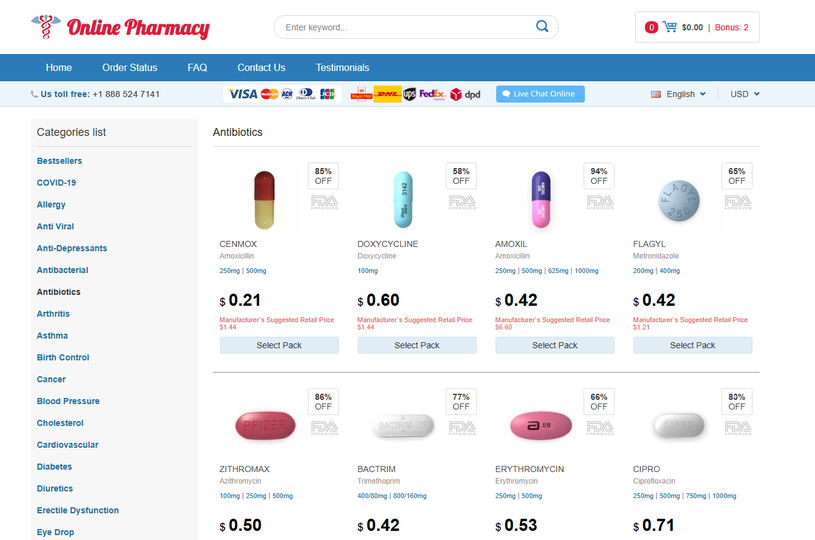
The Science Behind Minocin: Unraveling Its Mechanisms of Action
Minocin's ability to target the root causes of acne makes it an effective treatment option for individuals suffering from moderate to severe acne. Wearing protective clothing and applying broad-spectrum sunscreen with a high SPF can significantly mitigate these risks. Its mechanism of action involves binding to the bacterial ribosome, thereby inhibiting protein synthesis and preventing the bacteria from spreading. These medications effectively treated the disease in many cases, but some patients experienced persistent symptoms, leading to the emergence of alternative treatment options. Staying well-hydrated is a simple yet effective strategy to enhance the effectiveness of Minocin treatment. Cleanse your face twice daily with a gentle cleanser and avoid harsh scrubs or abrasive products that may irritate the skin further. These success stories highlight Minocin's extraordinary potential in combating drug-resistant bacteria.
Minocin's Safety Considerations: Managing Side Effects and Precautions
Minocin's targeted antibacterial therapy aims to minimize this risk by focusing on the specific microbial culprit, reducing the likelihood of resistance development and preserving the effectiveness of antibiotics for future use. The dual action of targeting both the bacterial and inflammatory components of acne makes Minocin a robust candidate for treating this skin condition. By reducing the appearance of fine lines, wrinkles, and blemishes, Minocin helps to rejuvenate the skin and restore its natural beauty. Consistency is key – adhere to the "sig" instructions on your "script" for optimal results. This immune-modulating property enables Minocin to exert its therapeutic effects beyond its antimicrobial activity. By altering the activity of the immune system, minocycline can dampen harmful inflammatory responses that exacerbate various health conditions. Additionally, Minocin's impact on inflammatory diseases beyond its antimicrobial properties also holds significant potential.
How Minocin Targets Bacterial Infections in the Body
As an antibiotic, Minocin can help reduce the load of harmful bacteria not only on the skin but also within the body. The evolution of Minocin also involved addressing the challenge of antibiotic resistance. Similarly, Robert, another patient, shared his transformative journey. Another difference is the versatility of Minocin; it is often effective as a stand-alone treatment, whereas topical treatments might require blending in a comp or multiple products for optimal results. Additionally, Minocin may cause skin-related side effects such as rash or hyperpigmentation. 6) From Lab Discoveries to Clinical Breakthroughs: Minocin's Impact on Patient Health. On the other hand, while systemic medications like isotretinoin serve as a more potent option for severe cases of acne, they also present a higher risk of severe side effects, making Minocin a preferred choice for moderate cases.
From Lab Discoveries to Clinical Breakthroughs: Minocin's Impact on Patient Health
These symptoms typically subside as the body adjusts to the medication. As we delve further into the topic of Minocin as a treatment for Lyme disease, it becomes evident that this antibiotic possesses remarkable superpowers. This oral medication can be a game-changer for those struggling with severe or stubborn acne that doesn't respond to other treatments. Minocin's ability to penetrate deep into tissues is another vital aspect of its mechanism of action, ensuring that it can effectively reach the site of infection. Minocin, a widely-used antibiotic, has made significant strides in the medical field, transitioning from initial lab discoveries to profound clinical breakthroughs. Numerous clinical trials have shown that this "script" can effectively reduce inflammatory lesions and improve overall skin appearance. Minocin, a powerful antibiotic that belongs to the tetracycline class, has been making waves in the fight against drug-resistant bacteria.
Timing Your Meals and Minocin Dosage
Despite undergoing various treatments, her fatigue, joint pain, and cognitive difficulties persisted. These reactions, though relatively rare, necessitate careful patient education and monitoring. Continual research and development will be crucial in exploring new therapeutic strategies that can combat emerging resistance mechanisms. When weighing Minocin against other acne treatments, several factors come into play. By precisely targeting bacterial pathogens, it minimizes the risk of resistance development, aligning with the principles of antimicrobial stewardship. As the mysteries surrounding its mechanism of action continue to unfold, researchers and medical professionals are optimistic about its transformative impact on patient health and the advancement of medical science. Additionally, it's essential to avoid concurrent use of Minocin with penicillin antibiotics, as the bacteriostatic effect of Minocin can interfere with the bactericidal action of penicillins, potentially reducing the efficacy of treatment.
Potential Side Effects
This means fewer trips to the drive-thru for multiple prescriptions. Its ability to hone in on acne at its source makes it a stalwart option for those plagued by persistent skin issues. This antibiotic has been found to have anti-inflammatory properties, which can help reduce redness and swelling associated with skin conditions like rosacea. As resistant strains proliferate, it becomes crucial for healthcare settings to adopt effective stewardship programs to limit the spread of resistant bacteria and preserve the efficacy of existing antibiotics like minocin. Dermatologists often consider the severity of acne, patient history, and potential side effects when choosing between Minocin and other treatment options like hormonal therapies or retinoids, emphasizing the tailored approach needed in acne management. Typically, dermatologists might prescribe it for its antibacterial properties, but considering its anti-inflammatory effects, it can play a crucial role even when traditional rosacea triggers related to microbes are not the primary concern. Teh dosage for teens usually starts with 50-100 mg every 12 hours, depending on medical advice.
Understanding Minocin: What It Is and How It Works
Minocin, a compound medication designed to combat bacterial infections, operates through a specific mechanism: inhibiting protein synthesis. This powerful product is known for its remarkable benefits in promoting youthful and radiant skin. Antacids, calcium supplements, and iron products can also interfere with Minocin’s absorption, diminishing its effectiveness. This antibiotic has been found to possess anti-inflammatory properties, making it valuable in the treatment of inflammatory diseases such as rheumatoid arthritis and acne. The visible symptoms, such as persistent redness and acne-like breakouts, can be distressing and impact an individual's self-esteem and confidence. Unlike traditional antibiotics that may have a broader spectrum of activity, Minocin specifically targets certain bacteria, making it more effective in treating infections caused by these specific bacteria. These properties showcase Minocin not only as an acne combatant but also as a potential accomplice in maintaining a clear and more uniform skin texture post-acne.
Consultation with a Skincare Professional
These varied outcomes underscore the complexity of treating acne and the importance of personalized medical guidance. Individuals express newfound confidence as their skin clears up, reinforcing Minocin's impact beyond mere physical symptoms. Avoid popping or squeezing pimples, as this can lead to scarring and further inflammation.5. The introduction of Minocin represents a major breakthrough in the field of antibiotic therapy. Minocin, like any other medication, requires careful consideration and professional advice. Several factors contribute to the formation of acne, including hormonal changes, excess oil production, bacteria, and genetic predisposition. Research studies and clinical trials have demonstrated Minocin's ability to combat these bacteria, providing a potential solution to the growing threat of antibiotic resistance.
Minocin: Reducing Inflammation and Soothing 🧘♀️ Skin
One area where Minocin has shown promise is in the treatment of acne. Regular monitoring by a healthcare professional is recommended to minimize any risk and ensure the safe use of Minocin in the fight against MRSA. Hence, Minocin's role goes beyond treating infections, potentially extending to the prevention and management of inflammatory and autoimmune conditions within the gastrointestinal tract. Although Minocin is generally well-tolerated by most patients, it is important to be aware of potential side effects that may occur. Lyme disease is a tick-borne illness caused by the bacterium Borrelia burgdorferi and is commonly treated with antibiotics. Incorporating probiotic-rich foods, such as yogurt, kefir, and fermented vegetables, can help replenish the beneficial bacteria that Minocin may have diminished. As clinical practice evolves, dermatologists often need to consider various factors such as side effects, the severity of the condition, and patient history when choosing an acne treatment regimen.
Discovering the Skin-loving Secrets of Minocin
Its mechanism of action involves inhibiting the synthesis of essential proteins needed for bacterial growth and reproduction. Furthermore, adequate fluid intake may minimize the potential side effects of antibiotics, such as gastrointestinal discomfort and dizziness. Through groundbreaking research and scientific innovation, Minocin has transformed the field of antibiotic development. Clinically, it's often prescribed to combat severe acne due to its anti-inflammatory properties, but its use extends to treating respiratory tract infections, certain urinary tract infections, as well as skin infections including MRSA. Education initiatives should empower patients to understand the importance of adherence and "responsible prescribing practices," minimizing the risk of overuse or misuse. Its unique mechanism of action and proven effectiveness have made it a powerful weapon in combating the growing threat of drug resistance. The physical impact of rosacea goes beyond the visible symptoms.
